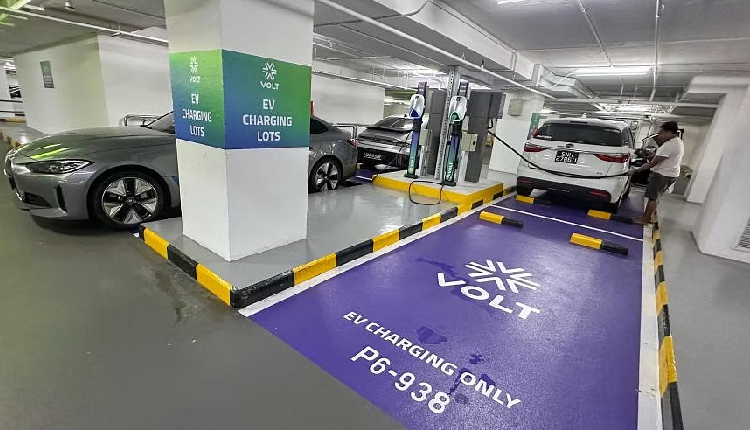In early 2023, the number of electric vehicles (EVs) on the road surpassed 20 million globally, according to Bloomberg Green. This surge in EV adoption is not just a testament to growing environmental awareness but also highlights significant advancements in EV infrastructure. One of the most transformative developments is the expansion of fast-charging networks, which are revolutionizing how we approach EV road trips. In this article, you’ll discover how these networks are changing the landscape of long-distance travel, the latest in charging technology, and practical tips for planning your next adventure.
The Rise of Fast-Charging Networks
The Evolution of Charging Infrastructure
Fast-charging networks have come a long way since the first EVs hit the market. Initially, EV owners faced limited charging options, with slow chargers that took several hours to top up a battery. Today, companies like Tesla, Rivian, and Electrify America have established vast networks of fast chargers that can power up an EV in as little as 15 to 30 minutes.
- Tesla’s Supercharger Network: As of October 2023, Tesla operates over 50,000 Superchargers worldwide. The latest V3 Superchargers can deliver up to 250 kW, providing up to 75 miles of range in just 5 minutes.
- Electrify America: Boasting over 3,500 charging stations across the U.S., Electrify America focuses on ultra-fast chargers with capacities up to 350 kW. This allows compatible EVs to charge from 10% to 80% in about 20 minutes.
- Ionity: In Europe, Ionity, a joint venture between major automakers like BMW and Volkswagen, aims to install 400 high-power charging stations by the end of the year, each capable of 350 kW.
Technologies Driving the Revolution
Fast-charging technology is constantly evolving, driven by breakthroughs in battery and energy management. Companies like Lucid Motors and Hyundai are pioneering 800-volt architectures that reduce charging times and improve efficiency.
- Solid-State Batteries: According to MIT Technology Review, solid-state batteries, expected to enter the market within the next few years, promise even faster charging and longer range.
- Bidirectional Charging: Some modern EVs, such as the Ford F-150 Lightning, feature bidirectional charging, enabling them to both receive power and supply it back to the grid or a home, providing greater flexibility and utility.
Planning an EV Road Trip in 2023
How to Charge Efficiently
Charging on the go has become more straightforward, thanks to smartphone apps and navigation systems that seamlessly integrate charging station locations and availability into route planning:
- Use Route Planners: Apps like A Better Routeplanner and PlugShare help identify optimal charging stops based on your vehicle’s make and model.
- Leverage Manufacturer Networks: Many automakers, including Tesla and Hyundai, offer integrated navigation systems that automatically route you via their charging networks.
Where to Buy Charging Memberships
For frequent travelers, purchasing a charging network membership can be a great investment:
- Tesla Membership: Offers reduced rates at Superchargers for a monthly fee.
- Ionity Passport: A subscription service providing discounted charging rates across Europe.
What to Compare When Choosing an EV for Road Trips
When selecting an EV for long-distance travel, consider the following factors:
- Range: Look for EVs with ranges exceeding 300 miles per charge. Models like the Tesla Model S Long Range and Lucid Air Grand Touring offer ranges above 400 miles.
- Charging Speed: Opt for vehicles supporting high charging speeds, such as the Porsche Taycan, which can charge at up to 270 kW.
- Comfort and Space: Ensure the vehicle offers enough space and amenities for comfortable travel.
Future Trends and Takeaways
The Road Ahead for Fast-Charging Networks
As we look to the future, several trends indicate further enhancements in EV road trip capabilities:
- Expansion of Networks: By 2025, the International Energy Agency (IEA) projects a fivefold increase in fast-charging stations worldwide, improving accessibility and reducing wait times.
- Integration with Renewable Energy: Fast-charging stations powered by solar and wind energy are becoming more common, making EV travel even more sustainable.
- Vehicle-to-Grid (V2G) Technologies: These advancements will allow EVs to act as mobile power sources, balancing demand on the grid and potentially earning drivers money.
Key Takeaways
Fast-charging networks are undeniably transforming the EV road trip experience, making it more convenient and accessible than ever before. By understanding the latest technologies and tips for efficient travel, you can make the most of your electric adventures.
Are you ready to hit the road and explore with your EV? Share your experiences and tips in the comments below, and consider subscribing to stay updated on the latest in EV developments. As we embrace these innovations, the future of travel looks electrifyingly bright.

